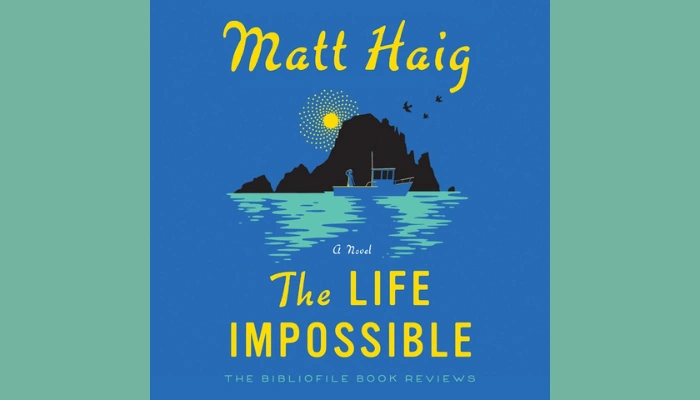Life is full of unpredictable twists and turns, and sometimes it can feel like we are navigating a life that seems impossible. Matt Haig’s The Life Impossible dives into this very theme, exploring the struggles, joys, and lessons that come with facing life’s toughest moments. In this article, we’ll take a deep look at the book, share personal insights, and highlight real-life examples that make Haig’s narrative relatable and inspiring.

Content
Understanding “The Life Impossible”
At first glance, The Life Impossible might seem like just another story about personal challenges and extraordinary circumstances. But Haig’s brilliance lies in making the impossible relatable. The story revolves around Grace, a young woman facing overwhelming obstacles in her life. Through her journey, readers are invited to reflect on their own challenges, learning that personal growth often stems from confronting adversity.
One of the most striking aspects of the book is its blend of life struggles and lessons with a touch of magical realism. Haig doesn’t just tell a story—he creates an emotional experience. You find yourself wondering, “How would I react if life handed me a challenge that felt impossible?” This reflective question is one of the many ways the book draws readers into Grace’s world.
Common Challenges People Face
In The Life Impossible, the challenges Grace faces are universal yet unique in their presentation. Readers can relate to her struggles because they mirror real-life obstacles:
- Uncertainty and Fear: Grace constantly faces situations where the outcome is unclear, mirroring the uncertainty many of us feel in our own lives.
- Self-Doubt: A major theme is overcoming internal barriers—learning to trust oneself even when circumstances feel overwhelming.
- External Pressures: Family expectations, societal norms, and unexpected events all contribute to making her journey feel impossible at times.
Through Grace’s experiences, Haig emphasizes that personal growth through adversity isn’t just a possibility—it’s often the only way to transform difficult experiences into meaningful life lessons.
Read More About: Lock Every Door
Lessons Learned from Life’s Impossible Moments
One of the strengths of this book is how it teaches readers to navigate the impossible. Here are some key takeaways that stood out:
- Embrace Failure as a Teacher: Grace’s setbacks are not dead-ends—they are opportunities to learn and grow. Life isn’t about avoiding mistakes but learning from them.
- Seek Support and Connection: Relationships play a crucial role in navigating challenging circumstances. Haig reminds readers that asking for help is a sign of strength, not weakness.
- Focus on Small Wins: Facing a life that feels impossible can be overwhelming. Breaking down challenges into small, actionable steps makes them manageable.
- Stay Open to Unexpected Opportunities: Life’s twists can bring unexpected rewards. Grace’s journey illustrates how staying open-minded can turn impossible situations into transformative experiences.
By exploring these lessons, Haig encourages readers to reflect on their own lives. Many of us have faced moments where it felt like the odds were stacked against us, but The Life Impossible shows that resilience and perspective can turn adversity into triumph.
Real-Life Case Study: Turning the Impossible into Reality
To illustrate how the themes of The Life Impossible apply to real life, consider the story of Sarah Mitchell, a 32-year-old entrepreneur from London. Sarah had always dreamed of starting her own café, but due to personal and financial challenges, the goal seemed impossible.
For years, she worked multiple jobs, saving every penny. At one point, a major setback—a sudden health issue—almost derailed her plans. Instead of giving up, Sarah approached her challenges like Grace in Haig’s story: she took small steps, sought advice from mentors, and embraced failure as a learning experience.
Within two years, Sarah not only opened her café but built a thriving business that became a community hub. Her story echoes the book’s message: even when life feels impossible, persistence, self-belief, and a willingness to adapt can transform obstacles into opportunities.
This case study reinforces the long-tail keyword, “lessons learned from impossible life challenges”, showing readers that the book’s lessons are not just theoretical—they are highly applicable to real-life situations.
Real Stories of People Who Conquered Impossible Situations
Grace’s story is just one example of overcoming adversity. Around the world, countless individuals have faced seemingly insurmountable challenges and emerged stronger. A few notable examples include:
- Bethany Hamilton: The professional surfer who lost her arm in a shark attack and returned to competitive surfing.
- Nick Vujicic: Born without limbs, Nick has become a globally recognized motivational speaker and author.
- Malala Yousafzai: Surviving a targeted attack, she became an international advocate for girls’ education.
These real-life stories align perfectly with Haig’s theme of inspirational life stories. They remind us that even the most challenging circumstances can be overcome with courage, determination, and resilience.
Tips for Thriving in Impossible Situations
Matt Haig’s book provides practical insights that can help anyone navigating life’s toughest challenges. Here are a few actionable tips inspired by the book and real-life experiences:
- Break Problems into Smaller Steps: Large challenges can feel overwhelming. Tackling them in small, manageable pieces makes them less intimidating.
- Maintain a Growth Mindset: Viewing obstacles as opportunities to learn encourages personal growth.
- Practice Gratitude: Focusing on the positives—even in difficult times—can improve resilience and mental well-being.
- Document Your Journey: Journaling or reflecting on progress helps you see growth over time.
- Celebrate Every Victory: Recognize and celebrate small wins, as they accumulate into significant achievements.
Incorporating these strategies into daily life can make even the most impossible situations feel manageable, echoing the book’s message of hope and resilience.
Conclusion: Key Takeaways from The Life Impossible
The Life Impossible by Matt Haig is more than just a novel—it’s a guide to navigating life’s toughest challenges. Through Grace’s journey, readers gain insights into the power of perseverance, self-belief, and the human spirit. The book encourages us to reflect on our own struggles, learn valuable lessons, and find inspiration in both fictional and real-life stories. Whether you are facing a life that seems impossible, seeking lessons learned from impossible life challenges, or looking for inspirational life stories, Haig’s book offers guidance, reflection, and hope. The narrative, combined with practical takeaways, ensures readers leave feeling motivated and equipped to face their own challenges.
If you’ve ever wondered how to turn setbacks into growth, The Life Impossible is a must-read, reminding us all that sometimes the impossible is just a stepping stone to personal transformation.
If you enjoyed exploring life’s challenges in The Life Impossible, you might also love reading our deep dive into Every Summer After — a story about love, memory, and second chances.
FAQs
What is the book Life Impossible about?
The Life Impossible follows Grace’s emotional journey of self-discovery, exploring themes of hope, growth, and second chances.
What was Matt Haig diagnosed with?
Author Matt Haig has openly discussed his experience with depression and anxiety, which deeply influence his writing themes.
Is The Life Impossible a sequel to The Midnight Library?
No, The Life Impossible isn’t a sequel. However, it shares similar themes of self-reflection and finding meaning in life.
Does The Life Impossible have romance?
Yes, The Life Impossible includes subtle romance that complements the story’s focus on healing and personal transformation.

Oliver is our non-fiction aficionado. He believes in the power of learning through books. Explore his curated selection of informative reads to expand your horizons.



